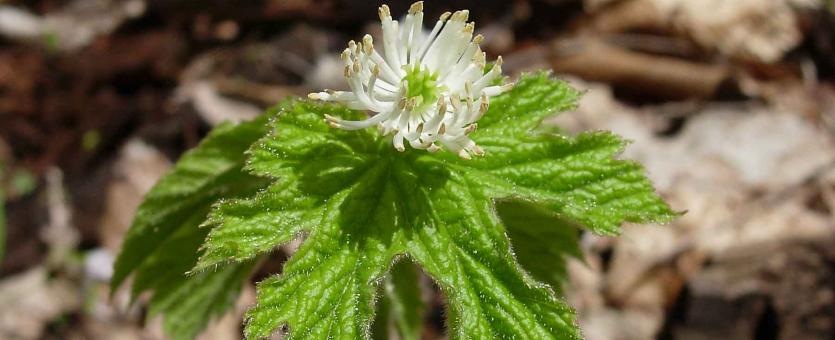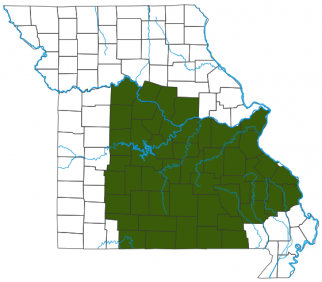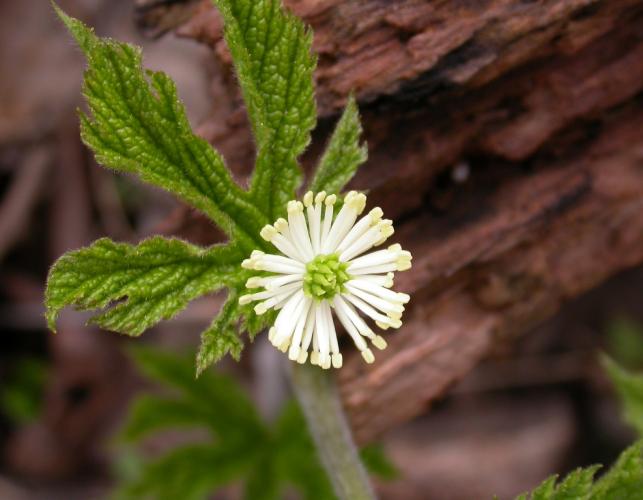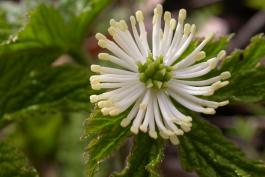
Golden seal is an herbaceous perennial. Flowers are terminal on a short peduncle (stem) arising from the axil of 2-leaved plants. The peduncle supports a very small leaf. The flower has no petals; 3 sepals fall off as the flower opens, leaving only white stamens and pistils in a rounded cluster that is about ½ inch wide. Blooms April–May. Leaves distinctive, with a crinkled texture, either 1 or at most 2, near the top of the hairy, unbranching stem; leaves large, 5-lobed with palmate veins, the lobes with large, coarse teeth. After flowering, a few basal leaves of the same shape appear. Fruit single, a compact, compound, scarlet berry, resembling a raspberry.
Height: to about 6 inches.

Mostly in the Ozarks and in Central Missouri. Absent from most northwestern and southwestern counties.
Habitat and Conservation
Occurs in moist, humus-rich wooded slopes and wooded valleys. Golden seal sometimes forms very large colonies.
Human Connections
The roots and sometimes the leaves are used medicinally, a practice that continues from Native American and frontier folk medicine. Numerous studies are focusing on its potential benefits as well as its toxicity. One concern is interactions that golden seal has with other medications.
Ecosystem Connections
Golden seal has long been declining throughout its range in part due to habitat destruction but mostly because of unscrupulous root collectors. Fortunately, today market demand is met by cultivated roots.

































